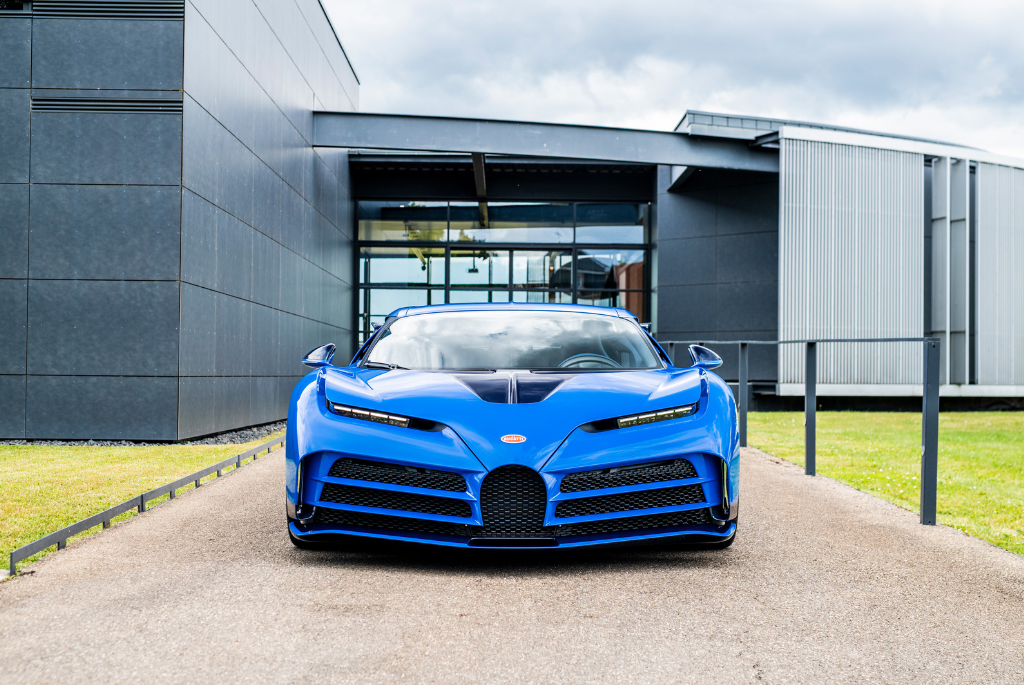
Back in 2019, Bugatti wrapped up a major project. They finished building the last Bugatti Centodieci, marking the end of an era. This unique hypercar is the tenth one created by hand at the Bugatti Atelier in Molsheim over the span of two years. Moreover, it’s the only car made under the leadership of Italian entrepreneur Romano Artioli, before Volkswagen took over Bugatti in 1998.
The last Centodieci was painted in a stunning Quartz White color with accents of Black Carbon. If you examine it closely, you’ll notice touches of Light Blue Sport on the brake calipers and the logo on the rear wing. These details pay homage to the original EB110, which was painted in Bugatti Blue.
The Bugatti Centodieci is based on the Chiron, but with distinctive bodywork and mechanical enhancements. These have made what was already an extremely fast car slightly faster, but the dramatic increase in the Centodieci’s price over what we now refer to as the standard Chiron is justified by both the visual upgrade and the car’s much greater exclusivity.
Only ten were built despite Bugatti Centodieci price of around $8.9 million, which is more than twice that of the Chiron, all were sold well before the formal announcement.
The Centodieci’s design incorporates many themes from the EB110, but never comes close to being a pastiche of its predecessor. The front features a similar grille graphic and a windshield that wraps around an invisible A-pillar. The car’s side features a new air intake with five apertures in the same pattern as the EB110, and the exhaust tailpipes are stacked two by two within the massive diffuser.
The “EB” in EB110 represents the initials of marque founder Ettore Bugatti, who would have turned 110 in 1991 – get it? – when that car was released. 2019 marked the company’s 110th anniversary, so a nod to the One-One-Zero seemed only natural.
The slab-sided EB110 was based on a Marcelo Gandini concept refined by Giampaolo Benedini, whose architectural background best explains why the design incorporates so many geometrical shapes, particularly in a decade when most supercars used more organic forms.
While the Centodieci draws inspiration from the EB110, it is not intended to be a retro car. The car’s proportions are defined by a very ‘90s wedge shape, which Bugatti stylists had never attempted to adapt to the Chiron platform before. They credit their success to the shrunken-down horseshoe grille, which allowed them to lower the hood and slope upward to a taller rear end.
While the nameplate reads One-One-Zero, styling cues and engineering details on the Centodieci are mostly about four and its multiples.
The engine, a 16-cylinder four-by-four, is boosted by four turbochargers and sends power to all four wheels. It’s cooled by four “chimneys” on the car’s upper surfaces, and the exhaust flows through four outlets stacked in pairs. This arrangement can be described as either “double-barrel shotgun” style or reminiscent of the English Electric F.6 Lightning fighter jet.
Each of these pieces breaks away from the EB110 of the 1990s while connecting the Centodieci to the rest of the modern Bugatti range, including elements such as the “Bugatti line” wrapping from the top of the side window to the door. The line on the Chiron is large, round, and C-shaped, while this car’s is more angular.
The Centodieci’s aerodynamics are likely the most advanced of any Bugatti yet, with a complex rear diffuser built around the stacked exhaust; channels that make the car’s front act like an inverted wing, providing much more down force than a Chiron; and “air curtains” around the wheels that blow air caught moving around the sides into a low-pressure area.
The only concession the designers made to the EB110 was the fixed rear spoiler, which still saved significant weight over the Chiron’s active aero kit.
We decided to save some of the most impressive numbers for last. The Centodieci’s 8.0-litre 16-cylinder engine has been tuned to produce an incredible 1,578 horsepower, allowing it to accelerate from zero to 96 km/h in less than 2.4 seconds. Top speed is electronically limited to just under 380 km/h (236 mph).


